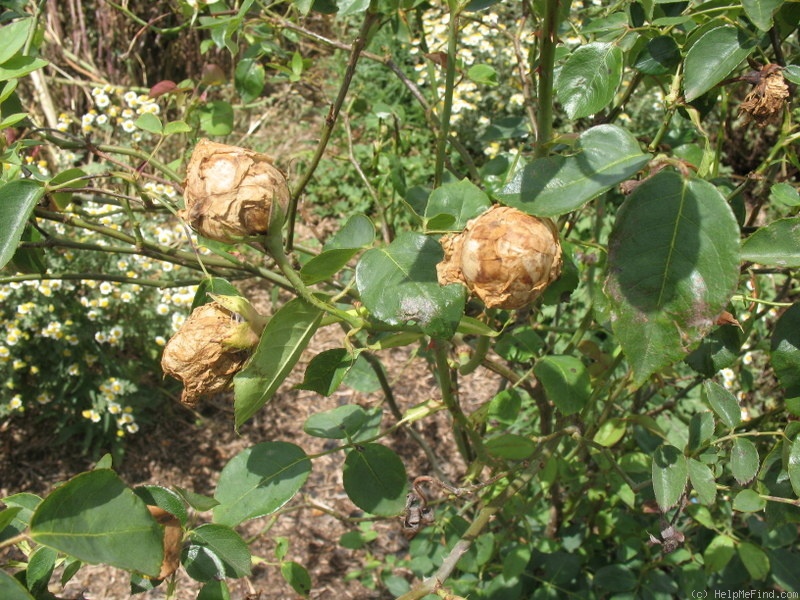|
|
"Pippie's Pottery Pink" rose Description

Photo courtesy of Jane Z
Bloom:
Variable. Pale to mid pink, slightly darker reverses, base yellow. Outer petals fade to whitish pale pink in hot weather. Normally sets no hips, but in dry conditions will produce a few. . Citrus, old rose, spice, tea, unpleasant fragrance. up to 40 petals. Large, full (26-40 petals), globular bloom form. Continuous (perpetual) bloom throughout the season. Medium, pointed buds.
Habit:
Tall, arching, upright. Leathery foliage. 3 to 5 leaflets.
Height: 5' to 8' (150 to 245cm). Width: up to 5' (up to 150cm).
Growing:
Can be used for cut flower, garden or shrub. Blooms tend to ball in wet weather. heat tolerant. prefers dry climates. Needs little care; relatively disease-free and quite hardy. Prune dead wood. Remove spent blooms only.
Patents:
Patent status unknown (to HelpMeFind).
Notes:
Possible identifications:
Edgar M. Burnett 1914
Glorified La France 1919
La Tosca 1900
Lady Ursula 1908
Lord Rossmore 1930
Viscountess Folkestone 1886
Rejected:
Admiral Dewey. Too pale and blooms were said to be held erect.
Lady Ashtown References consistently say this has a high-pointed center. The colour seems deeper than our foundlings.
Mme. Caroline Testout. It has some similarities but the foundlings are probably double, and more, the height of this Mme. Caroline Testout The prickle shape is different in both these roses. Pedicels are more erect and more prickly and the colour is deeper than the foundling.
Mme. Leon Pain The reverse may be too deep in colour.
Mme. Segond-Weber was said by Hazlewood to be a good seed setter and perhaps too salmon.
Mrs. W. J. Grant, - This rose has been investigated and discounted.
Pharisaer discounted because it sets hips. Refer 'The Rose Annual', UK, 1910, page 55.
Warrawee 1936 was bred too late to align with the <1925 date of "Mary Matthews"
Document from Jane Zammit August 10, 2007 mentioned: “early HT probably, one young plant in ground, first & only bloom balled badly”
|